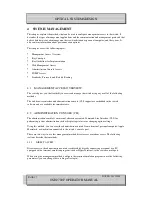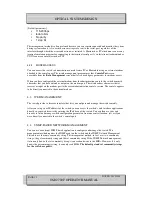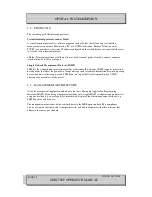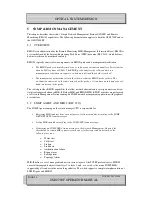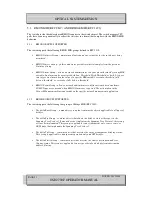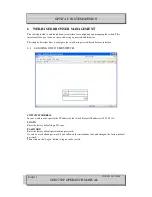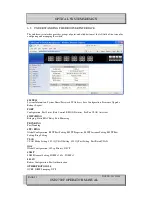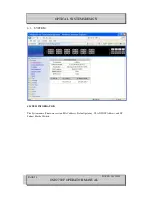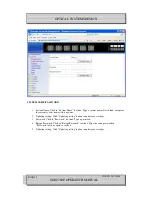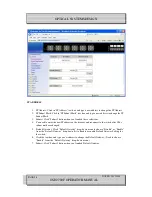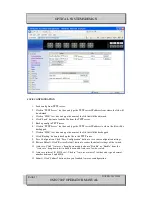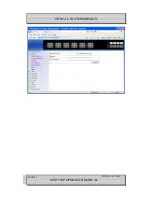
OPTICAL SYSTEMS DESIGN
DOC ID: 10111504
OSD2700F OPERATOR MANUAL
PAGE 20
5
SNMP & RMON MANAGEMENT
This chapter describes the switch’s Simple Network Management Protocol (SNMP) and Remote
Monitoring (RMON) capabilities. The following documentation applies to both the OSD2700F and to
the OSD2700SFP
5.1
OVERVIEW
RMON is an abbreviation for the Remote Monitoring MIB (Management Information Base). RMON is
a system defined by the Internet Engineering Task Force (IETF) document RFC 2819, which defines
how networks can be monitored remotely.
RMONs typically consist of two components: an RMON probe and a management workstation:
•
The RMON probe is an intelligent device or software agent that continually collects statistics
about a LAN segment or VLAN. The RMON probe transfers the collected data to a
management workstation on request or when a pre-defined threshold is reached.
•
The management workstation collects the statistics that the RMON probe gathers. The
workstation can reside on the same network as the probe, or it can have an in-band or out-of-
band connection to the probe.
The switch provides RMON capabilities that allow network administrators to set parameters and view
statistical counters defined in MIB-II, Bridge MIB, and RMON MIB. RMON activities are performed
at a Network Management Station running an SNMP network management application with graphical
user interface.
5.2
SNMP AGENT AND MIB-2 (RFC 1213)
The SNMP Agent running on the switch manager CPU is responsible for:
•
Retrieving MIB counters from various layers of software modules according to the SNMP
GET/GET NEXT frame messages.
•
Setting MIB variables according to the SNMP SET frame message.
•
Generating an SNMP TRAP frame message to the Network Management Station if the
threshold of a certain MIB counter is reached or if other trap conditions (such as the
following) are met:
o
Warm start
o
Cold start
o
Link up
o
Link down
o
Authentication failure
o
Rising alarm
o
Falling alarm
o
Topology Alarm
MIB-II defines a set of manageable objects in various layers of the TCP/IP protocol suites. MIB-II
covers all manageable objects from layer 1 to layer 4, and, as a result, is the major SNMP MIB
supported by all vendors in the networking industry. The switch supports a complete implementation of
SNMP Agent and MIB-II.












